Top 10 UNESCO World Heritage Sites
A treasure trove of history, culture, and natural wonders, the United Nations Educational, Scientific, and Cultural Organization (UNESCO) Heritage Sites strive to protect the truly magnificent wonders of our planet. More than 850 sites are honored with this designation and the belief that they “belong to all the peoples of the world.”
The Great Barrier Reef, filled with millions of exotic and rare species of marine life, belongs to all — as well as the proud Statue of Liberty, which has welcomed innumerable new citizens at the gateway to New York City. With such treasures belonging to everyone, it’s time to begin exploring!
Consider Road Scholar’s list of our 10 favorite UNESCO World Heritage Sites before embarking on your own journey, and create your own personal list of favorites. Moreover, you can explore UNESCO sites on more than 50 Road Scholar learning adventures!
What is a UNESCO World Heritage Site?
You might have noticed certain areas designated as a UNESCO World Heritage Site when traveling. But what is a UNESCO World Heritage Site? UNESCO encourages the protection and preservation of natural and cultural heritage attractions that embody our legacy of the past and what we plan to pass on to generations in the future.
UNESCO Heritage Sites are found across the globe and are protected by an international treaty called the Convention Concerning the Protection of the World Cultural and Natural Heritage, which UNESCO adopted in 1972. UNESCO World Heritage Sites can be attractions or areas that have some significance, whether cultural, scientific, or historical.
When researching UNESCO World Heritage Sites by country, you can find areas or attractions, such as buildings, deserts, cities, monuments, historic structures, mountains, or wilderness areas. UNESCO World Heritage Sites are universal and have a broad meaning to ensure any significant area or attraction can be honored and protected.
Examples of some of the top 10 UNESCO World Heritage Sites include the Great Pyramids of Egypt, the Galápagos Islands in Ecuador, the Great Barrier Reef in Australia, and the Grand Canyon in the United States. Below, you’ll find our guide to the top 10 world heritage sites you can explore with Road Scholar.
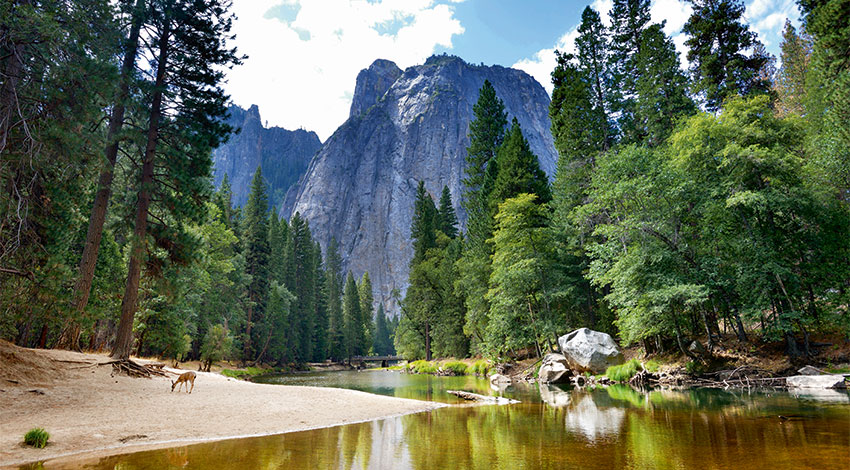
1. Yosemite National Park | California
American conservationist John Muir once said of Yosemite, “It is by far the grandest of all the special temples of nature I was ever permitted to enter.” With more than 1,100 square miles of designated wilderness, Yosemite National Park is one of the grandest examples of biodiversity. Black bears, bobcats, spotted owls, and the white-tailed hare are only a handful of the species that make Yosemite their home, thriving in the forests, valleys, and mountains that make up this magnificent park.
Designated a World Heritage Site in 1984, the natural wonders of Yosemite can be explored as you journey along the park’s 800 miles of designated trails. Giant sequoias, the majestic Yosemite Falls, and U-shaped valleys are only a few reasons to add Yosemite National Park to your list of world heritage sites to visit.
See all of our Yosemite National Park adventures
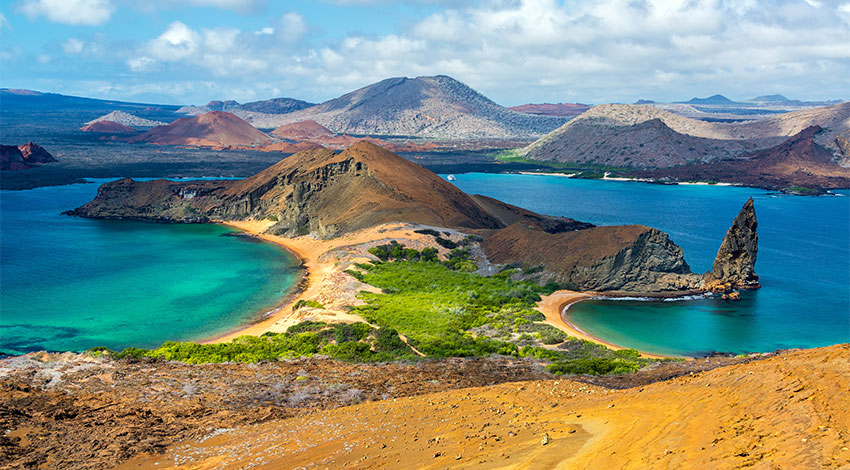
2. Galápagos Islands | Ecuador
Blue-footed boobies hopping from rock to rock, sea turtles making their way from ocean to sandy beach, and sea lions frolicking in the waves along the coast — such natural beauty can only be found in the idyllic Galápagos Islands. More than 100 years ago, this archipelago of volcanic islands served as an important research station for Charles Darwin and contributed heavily to his theories of evolution. Today, this UNESCO World Heritage Site is heavily protected and includes a marine reserve second only in size to the Great Barrier Reef.
When planning a trip to these incredible islands, visitors might consider extending their visit to South America to take in the majestic and sacred sights of the Incan settlement Machu Picchu — another prominent location on the list of UNESCO World Heritage Sites.
See all of our Galápagos Adventures
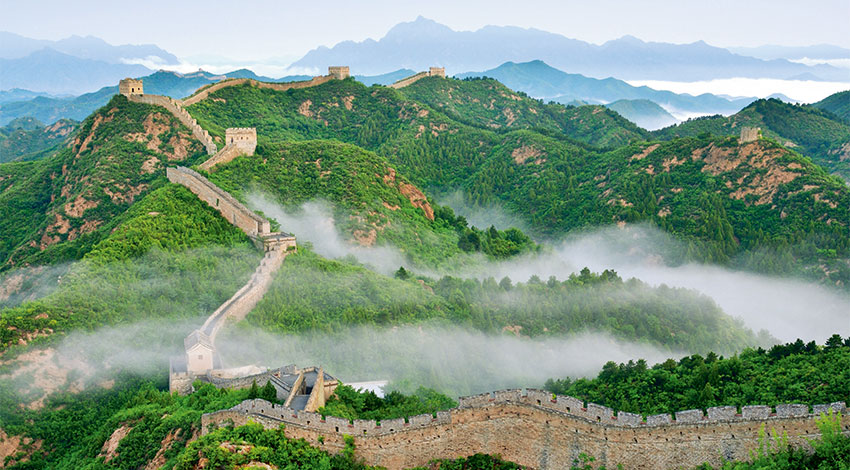
3. Great Wall of China | China
The dragon-like winding fortification stretches 4,163 miles from east to west of China, creating the world’s largest military structure: the Great Wall of China. Also one of the Seven Wonders of the World, the Great Wall was built and maintained during three dynasties — from the sixth through the 16th centuries — to defend against enemy attacks.
This magnificent architectural feat made from earth and stone has stood for more than 2,000 years, a monument to China’s early engineering genius and complex history. Though some parts of the Great Wall have crumbled through the years, this UNESCO World Heritage Site remains one of the most visited landmarks in China each year.
See the Great Wall on these Road Scholar adventures
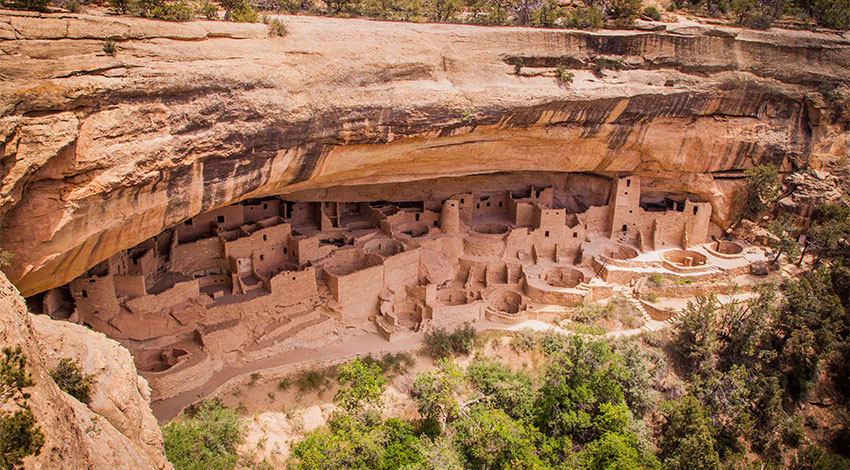
4. Mesa Verde National Park | Colorado
More than 1,500 years ago, the Anasazi — a tribe of ancient Pueblo people — made their homes in cliff dwellings and mesa-top pueblos throughout the hills of Colorado. Farming terraces, dams, and reservoirs were also built by the Pueblos, providing their communities with unique technology. Extensive forests of juniper and pinyon pine gave the area the appearance of a green table, a description later translated into Spanish as mesa verde.
Centuries later, Mesa Verde National Park protects more than 4,700 archaeological sites, including 600 cliff dwellings. A supreme example of the early societies that once thrived in North America, the park was designated a UNESCO World Heritage Site in 1978.
Visit Mesa Verde National Park with Road Scholar

5. Old City of Jerusalem | Israel
As the city that holds the tomb of Jesus Christ and the sacred place where Mohammed ascended into heaven, the Old City of Jerusalem is critically important in the history of the world’s major religions. Today, the city is divided into four quarters — the Christian Quarter, the Jewish Quarter, the Muslim Quarter, and the Armenian Quarter — and is listed as one of the UNESCO World Heritage Sites in danger.
Sites of religious significance include Temple Mount — where Abraham was ready to slay his son, Isaac, as a religious sacrifice — the Church of the Holy Sepulchre, the Western Wall, the al-Aqsa Mosque, and many more. A pilgrimage to the Old City of Jerusalem will reveal a modern look into a city steeped with history, religion, and heritage.
Explore Jerusalem on these Road Scholar adventures
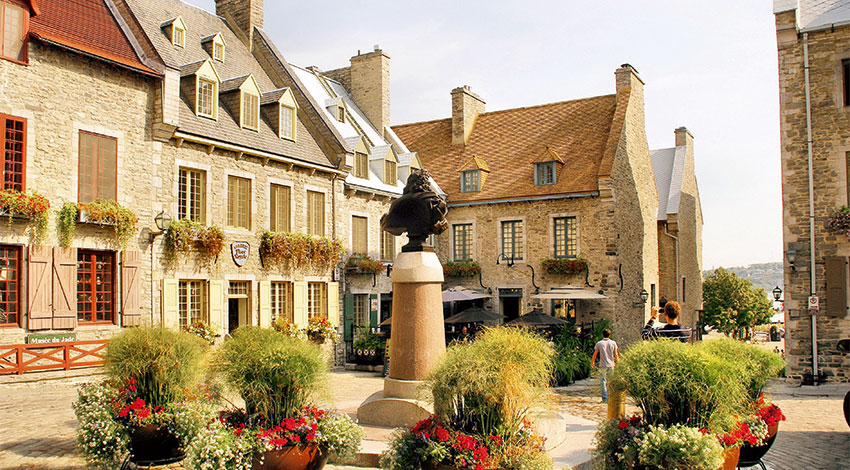
6. Historic District of Old Québec | Québec City, Canada
The French explorer Champlain founded this fortified colonial city in 1608 and served as the capital of New France in the late 18th century. Today it remains the only walled city north of Mexico. Visit to see the preserved ramparts, bastions, and gates surrounding this 17th-century city. Explore the churches and convents of the Upper Town and learn about the French colonial history embedded in Old Québec’s architecture, language, life, and identity.
See all Road Scholar adventures in Québec

7. Great Barrier Reef | Australia
Astronauts in space can identify the Great Barrier Reef, the largest living structure on Earth. Located off the coast of northeastern Australia, the reef is formed from more than 400 kinds of corals and is home to more than 1,500 species of fish, 5,000 species of mollusk, and 500 species of seaweed. In addition, an innumerable number of whales, sharks, reptiles, porpoises, and sea snakes inhabit the reef, while the reef’s islands provide a home for hundreds of shorebirds and other reptiles.
The magnificent ecosystem of the Great Barrier Reef attracts and maintains a habitat for many endangered species, including the green sea turtle. Snorkel, swim, or photograph this incredible reef — however you choose to explore, it is undoubtedly a UNESCO World Heritage Site to add to your life list.
See all Road Scholar adventures in Australia & New Zealand

Excerpt from “The New Colossus” by Emma Lazarus“Give me your tired, your poor,
Your huddled masses yearning to breathe free,
The wretched refuse of your teeming shore.
Send these, the homeless, tempest-tossed to me,
I lift my lamp beside the golden door!"
8. Statue of Liberty | New York City
Both the subject of poetry and a symbol of hope, the Statue of Liberty has welcomed visitors and immigrants to the shores of the United States since 1886. This gift to the people of America from the citizens of France required an unprecedented collaboration between the two countries to erect the 305-foot copper statue on Liberty Island. Intended to act as a lighthouse — literally and symbolically — this UNESCO World Heritage Site continues to act as an ambassador to freedom and a symbol of the American dream.
See all Road Scholar adventures in New York City

9. Agra Fort | India
The red sandstone fortress of Agra required more than 1.5 million builders work for eight years to complete it in 1573. Walls that reach 70 feet high, majestic gates, and luxurious palace accommodations were instructed to be built by Akbar, the ruler of the Mughal Empire. The fortress has maintained its exquisite beauty to this day, and continues to be utilized as barracks for the Indian army.
While exploring the wonders of Agra Fort, visitors may wish to extend their journey to the Taj Mahal, a monument built by Akbar’s grandson, Shah Jahan, in honor of his beloved wife. Be aware that these world heritage sites may overwhelm visitors with their magnitude, stunning displays of architecture, and fascinating history.
Explore India with Road Scholar

10. Nubian Monuments | Egypt
In southern Egypt, you can find the Nubian Monuments, one of the top UNESCO World Heritage Sites to visit. The Nubian Monuments were built by pharaohs starting in the 2nd millennium B.C. and are found along Lake Nasser, stretching from the Sanctuary of Isis at Philae to the Great Temple of Ramses II at Abu Simbel. In total, 11 separate sites make up the Nubian Monuments and were built in an attempt for the Nubian Kingdom to retain dominance. In the monuments, items such as gold, ivory, and copper were stored, and served as an ancient site of historical significance.
Over the years, UNESCO helped save two of the most significant monuments, the sanctuary at Philae and the temples of Abu Simbel, from the rising waters of Lake Nasser. These monuments were taken apart and completely rebuilt to ensure they were protected. Other monuments include the Temple Of Maharraqa and the Temple Of Derr.
Explore the Nubian Monuments with Road Scholar
Visit Your List of World Heritage Sites With Road Scholar
Are you excited after learning about the top 10 UNESCO World Heritage Sites? Book your trip with Road Scholar today. At Road Scholar, we have a wide range of experiential learning adventures, including tours of the top 10 world heritage sites. Through each tour, you’ll learn from a local expert who will teach you about the history, culture, geography, wildlife, and landscapes of the heritage attraction you’re visiting, whether it’s the Statue of Liberty in New York City or the Great Wall of China. Find an adventure today and start making your list of the top UNESCO World Heritage Sites by country.
